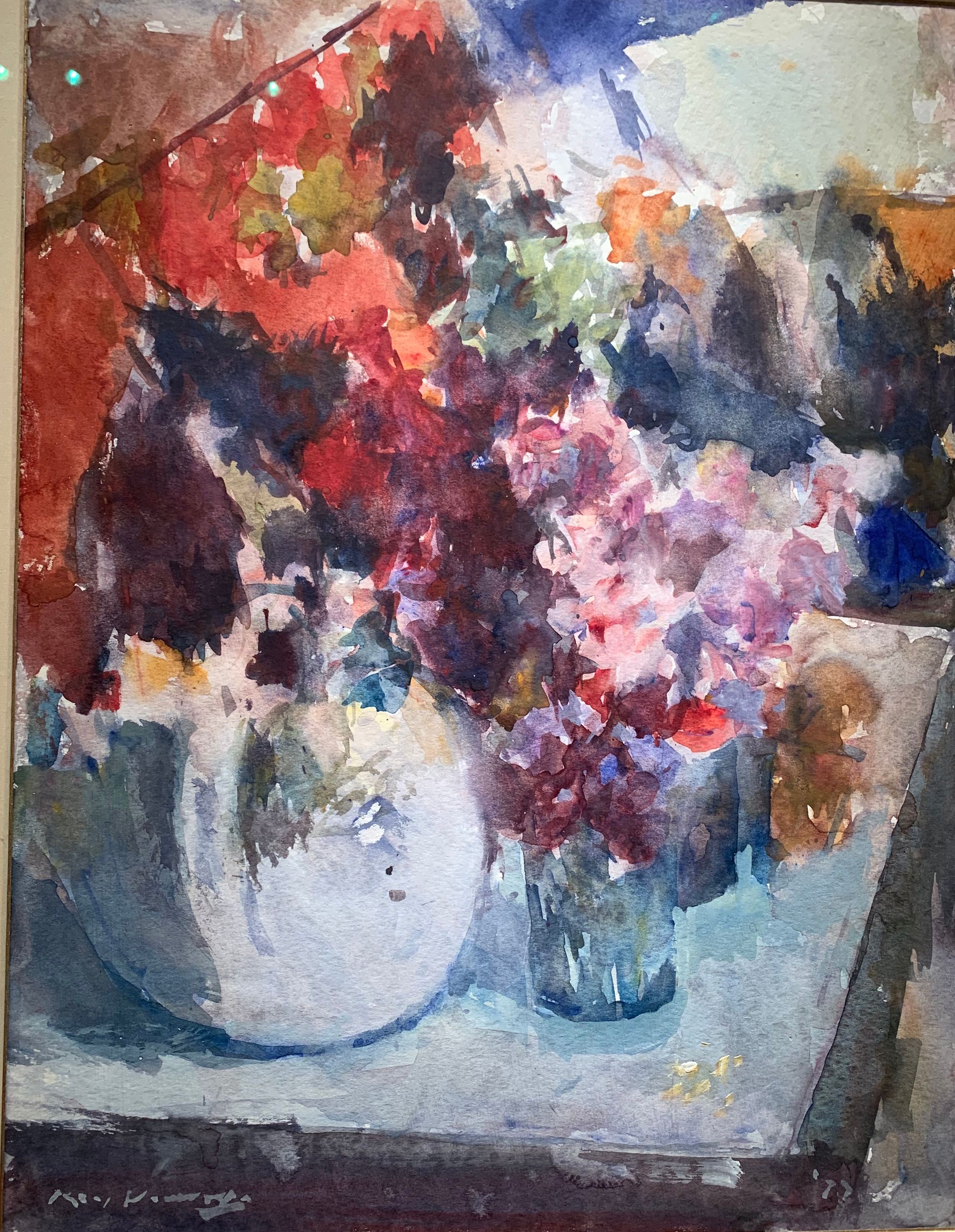K. (KEES) VERWEY 1900 Amsterdam - 1995 Haarlem Flowers in a Green Glass Vase
Oil / Canvas: 44 x 34,5 cm
- This artwork can be viewed in our gallery
- Call us for more information: +31 26 361 1876
- World wide shipping available
Width: 34,5 cm
Collection of the late Dr. J.A. Molhuyzen
Over K. (KEES) VERWEY
Kees Verwey chose his subjects near home. In the world surrounding him was an "unimaginable source of beauty." Every day. He lived almost the entire 20th century and saw many art movements passing by. However, he remained true to himself. Although he was called "the hermit at the Spaarne," he closely followed all innovations. His starting point has always been observation; his work became increasingly powerful and expressive. Verwey studied 1918-1919 at the School for Arts and Crafts in Haarlem and 1925-1926 at the Rijksakademie van beeldende kunsten in Amsterdam. He was a pupil of Henri Boot, the founder of the Haarlem School and of Samuel Jessurun de Mesquita and Johannes Hendricus Jurres. His works included (floral) still lifes, portraits, watercolors and studio paintings, using his own studio on the Spaarne in Haarlem as a backdrop. He remained active into old age. His style stems from impressionism. Influences of Breitner and Seurat's divisionism led him to a personal synthesis of impressionism and colorism. He was a member of the Haarlem artists' society Kunst Zij Ons Doel, the Kennemer Artists' Circle and the Holland Watercolorists' Circle. In 1951 he married Jeanne Tilbusscher, who was a teacher at the Haarlemsche Huishoud- en Industrieschool. He became well known when his work was exhibited along with other Haarlem artists such as Hendrik van den Eijnde. This exhibition was held in the newly decorated hall for modern art behind the Frans Hals Museum. In 1961 his work was honored with the Rembrandt Prize. In the late 1970s, he had an exhibition at the Stedelijk Museum in Amsterdam. In 1985, 1990 and 1993, he had exhibitions in Haarlem. In 1989 and 2019, his work was on display at the Dordrecht Museum and in 1990 at the Gemeentemuseum Den Haag. Work by his hand is in the collections of Stedelijk Museum in Amsterdam, Singer Museum in Laren and Gemeentemuseum in The Hague. Among his pupils were Frans Funke Küpper and Henk Fonville. In 1984, he donated his estate by bequest to the municipality of Haarlem, but when the municipality dragged its feet in finding good accommodation, he withdrew this offer and placed his work in the Kees Verwey Foundation, of which he himself was the chairman. This foundation itself financed the conversion of the former gentlemen's club Trou moet Blycken into a suitable exhibition space. Since then his oeuvre, consisting of thousands of paintings, watercolors and drawings is presented in the Verweyhal belonging to Museum De Hallen and Frans Hals Museum. The Kees Verwey Foundation cooperated with National Academy of Fine Arts and since 2005 provided an annual scholarship to starting artists. His environment was his world in which for him "an unimaginable source of beauty" was hidden and would always remain his source of inspiration. The artist Peter Strucyken wrote about him in 1988, "I think the way he modulates color into form is extraordinary. Rarely does a form arise from a descriptive line.(...) With Verwey, form arises from color differences. Within his paintings, forms appear and disappear in infinite variation." Verwey used to work on firm somewhat grainy paper. This enabled him to obtain an even drying of the watercolors. The graininess created light effects in the transparent paint layer. And light has always been of great importance to Verwey: "I think the light which shines through the curtains is more fascinating than the whole life behind me."


